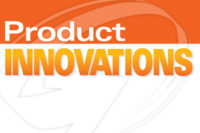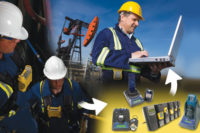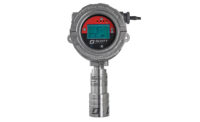Gas detection Gets smart
Four innovations make compliance almost automatic

Chicago Fire Chief Bob Anthony oversees Chicago’s fleet of 240 gas monitors and breathing apparatus. He says that when an ambulance paramedic arrives on the scene of a suspected gas leak, atmospheric readings are taken by two instruments whenever possible.
He credits this “redundant safety” procedure to his department’s decisive action last fall to evacuate a Chicago school and send 70 children and seven adults to a hospital for carbon monoxide poisoning. It was the department’s largest CO school rescue on record. Everyone returned safely to their homes within a day.
Gas detection manufacturers are working with customers across a variety of industries to make safety compliance simpler, almost automatic, with built-in or redundant safeguards. In this article, we examine four important technology innovations that are moving the industry toward further automation, resulting in greater assurance of safety compliance.
1 Wireless gas monitoring
Wireless confined space gas monitors are the latest development in confined space safety, and offer a significant advantage: they provide real-time gas monitoring and can extend confined-space communications, bi-directionally, to remote parts of a business operation. Ultimately the chief benefit is faster, more assured and informed response to a potential safety incident such as a Man Down.
“These monitors do not displace the OSHA-stated requirement for an confined space attendant, but functionally they do serve like an additional attendant, adding another line of sight into the confined space,” said Prabhu Soundarrajan, an engineer by training who has spent ten years developing the technology and marketing of wireless gas monitoring solutions. “The readings can be relayed almost instantaneously, not only to the required confined space attendant, but to any part of the operation, via WiFi or a dedicated mesh radio network. That way, additional stakeholders can be apprised of a confined space emergency that might require pre-emptive action. As the saying goes, two minds are better than one.”
Environmental readings from the confined space can be viewed on a laptop or smart phone with internet connection. The wireless gas monitoring solution has the added benefit of sending automatic email or SMS text messages to key stakeholders that are not on the software viewing platform, ensuring rapid response to critical events.
2 Non-compliance indication
Today manufacturers of confined space portable gas monitors have developed an intelligent new technology of flash illumination for use in confined space portable gas monitors. The technology manifests itself as a bright flashing green LED light on the portable unit, serving as a visual confidence check or safety audit. It allows a safety supervisor to visually confirm – at a glance, up to 20 feet away from the operator in broad daylight – that the portable gas detector has been properly calibrated or bump tested with gas. Today it is a mandatory requirement for each operator to know that his detector is tested and working prior to passing through the security gate into the hazardous area, and this check-off must be done routinely with all the other PPE (personal protective equipment) checks done daily.
You can now rapidly check that your entire crew is compliant and ready to start work. Assurance is reinforced by the knowledge that portable devices and docking modules in the instrument shack have a complete record of each gas monitor and its essential bump test history. If the flashing light stops flashing at any point during the day, the operator and supervisor know immediately there is a problem with one of the sensors, and can have the unit checked out.
The flashing light also has the secondary benefit of confirming continuous sensor operation inside a confined space area. This may be important if the monitor has been dropped in water or become covered with dirt or contaminants. In a dark sewer channel the flashing light can be seen from many yards away, a tiny beacon of confirmation to the crew that all is well with the gas detector, and an immediate verification for confined space entrants to spot-check the work being done and verify the crew’s condition.
3 All-in-one docking
Premium docking stations practically “do it all” — performing the functional or bump test, calibrating the instrument, recording and storing data, charging the monitors and carrying out instrument diagnostics. If evidence of proper maintenance and care of a gas detector is ever needed, for litigation perhaps, docking stations provide objective proof.
With datalogging software pulled from the instrument into the docking station, recordkeeping can be automated with date and time stamp. Calibration certificates, OSHA compliance records and other internal reporting tasks are produced easily and quickly. All-in-one docking stations take records management from what has long been a manual, tedious task to one that automates the entire records-keeping process, while adding instrument diagnostics and maintenance scheduling for an entire fleet of wireless gas monitors.
4 Connectivity
Sensing technologies combined with the fast mobile internet and virtually unlimited bandwidth gives you intelligence to make the right safety-related decisions at the right time, every time.
Sensors can monitor a worker’s heartbeat, pulse, temperature, posture and other biophysical conditions. The information is collected on a device worn by the worker, and is sent to cloud-based computing, with data visible on the end-user side on a visual display that could be a PC, laptop, smart phone or other electronic device.
By adding more sensors, including micro-sensors, and microchips into worker “wearables” or personal protective equipment, companies can begin to experience the benefits of smart applications and the power of connectivity. Ultimately this means companies get the power of information and intelligence delivered to their fingertips to make the right decisions enabling their business to be safer and more productive.
Looking for a reprint of this article?
From high-res PDFs to custom plaques, order your copy today!





